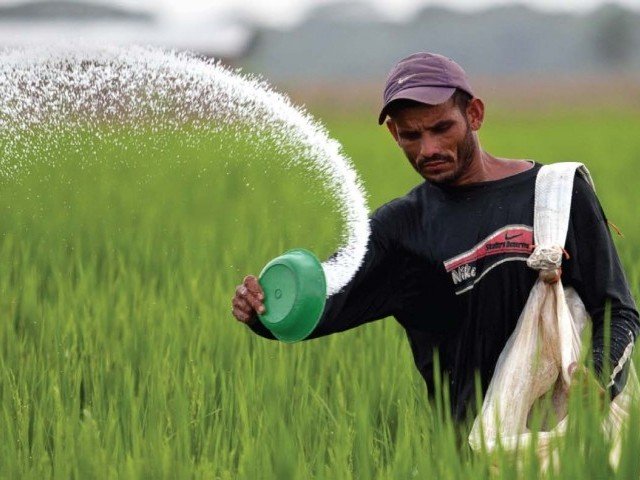
“As per data released by the National Fertiliser Development Centre (NFDC), during April 2018 total fertiliser off-take showed a strong growth of 27% year-on-year to 558,000 tons primarily due to heavy urea off-take (375,000 tons),” Taurus Securities’ analyst Waqas Ahmed said in a brief comment.
“The consumption of urea is higher during the sowing season. It also remains in use throughout the year,” Sindh Abadgar Board’s representative Syed Mehmood Nawaz Shah said while talking to The Express Tribune.
Reaction to budget: Fertiliser industry fears more accumulation of refund claims
“The consumption of fertiliser is seen increasing due to increased awareness among farmers to apply its good quantity to achieve a higher yield, uptick in farmers’ income and subsidy on fertilisers,” he added. Farmers have so far sown 40% of cotton crop and 10-15% of rice crop. They should end cotton sowing by the end of May and rice cultivation by July in Sindh.
The sowing season of almost every crop begins from lower Sindh, moves on to the upper Sindh and ends in Punjab in accordance with the climate.
According to details, urea sales increased 50% to 375,000 tons in April 2018 compared to 250,000 tons in the same month of previous year.
Meeting shortfall: Plan to import fertiliser irks local industry
Sales of di-ammonium phosphate (DAP) were recorded at 69,000 tons in the month, which was 28% lower than 96,000 tons in April 2017.
Farmers heavily consume DAP during wheat (Rabi) sowing season, which ended in March 2018. Accordingly, the drop in sales is seasonal.
The analyst, however, linked the massive drop in DAP sales with a sharp increase of 22% in its price year-on-year.
“We attribute the surge in urea off-take…amid higher demand from dealers to an anticipated increase in urea prices,” he said.
In the first four months (January-April) of 2018, cumulative sales of urea increased 45% to 1.63 million tons and DAP sales edged up 6% to 434,000 tons.
Urea, DAP: Fertiliser sales surge as dealers build up inventory
“With the onset of Kharif sowing season, we foresee a pick-up in demand for urea. Moreover, comfortable inventory levels of urea and DAP have improved pricing power for local fertiliser manufacturers and as a result average urea price has increased by 4.70% month-on-month,” Ahmed said. Currently, international urea and DAP prices were hovering around $240 and $385 per ton respectively and are expected to remain steady, which along with removal of price cap (Rs1,400 per bag) from urea would provide an added advantage to local manufacturers, he added.
“National Fertiliser Marketing Limited has proposed to import 600,000 tons of urea, however, with the allocation of 75mmcfd of gas from Mari field to Pakarab Fertiliser along with increasing inventory levels are likely to keep urea imports below proposed levels,” he said.
Published in The Express Tribune, May 29th, 2018.
Like Business on Facebook, follow @TribuneBiz on Twitter to stay informed and join in the conversation.










































COMMENTS
Comments are moderated and generally will be posted if they are on-topic and not abusive.
For more information, please see our Comments FAQ